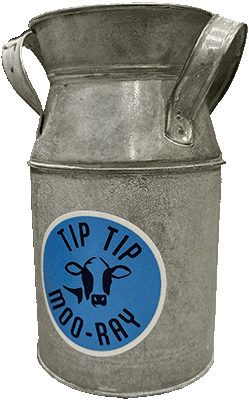Knott Dairy Center at WSU is one of the very few remaining university dairies in the country. 180 lactating cows on the farm provide research, education, and outreach opportunities to support Washington’s dairy industry – the second largest agricultural sector in the state.
A fascinating piece written by Karen Hunt at WSU outlines how birds have been harassing cows to an extent that produces noticeable negative effects on their nutrition and behavior. Researchers have also come up with solutions to deter these birds and their ill effects.
Birds terrorizing dairy cows
Dairy farmers were looking for a way to deal with the bird issue. Murmurations of up to 10,000 European starlings, an invasive species, have been swooping in to eat the cows’ feed. Both feasting and selecting the most nutritious components and leaving the less nutritious components behind, farmers were forced to buy more feed to keep up with both the cows and the birds.
Alongside the nutritional issue, these birds were also bullying the cows to carve out a space for themselves in the cows’ feeding area. This causes cows to become aggressive and fight one another to secure their spot in the remaining space to enjoy their meal.
Employing bigger birds and lasers
American kestrels have become a useful component of combatting the invasive starlings. Kestrels are larger than starlings and better fighters. They can be seen on video defending their nests with ease. Falconers have also trained kestrels to attack the invasive birds on command.
Lasers have also been used at dusk to prevent starlings from setting up nests on farms for the night. Lasers can be automated with advanced tooling, but handheld laser pointers are also effective.
While these options may not be immediately accessible to all farmers, the research is a positive development in the awareness of challenges faced by dairy cows and what might be done about to help them out.
WSU Insider: ‘Got Milk?’ WSU researchers partner with farmers to solve dairy industry challenges




